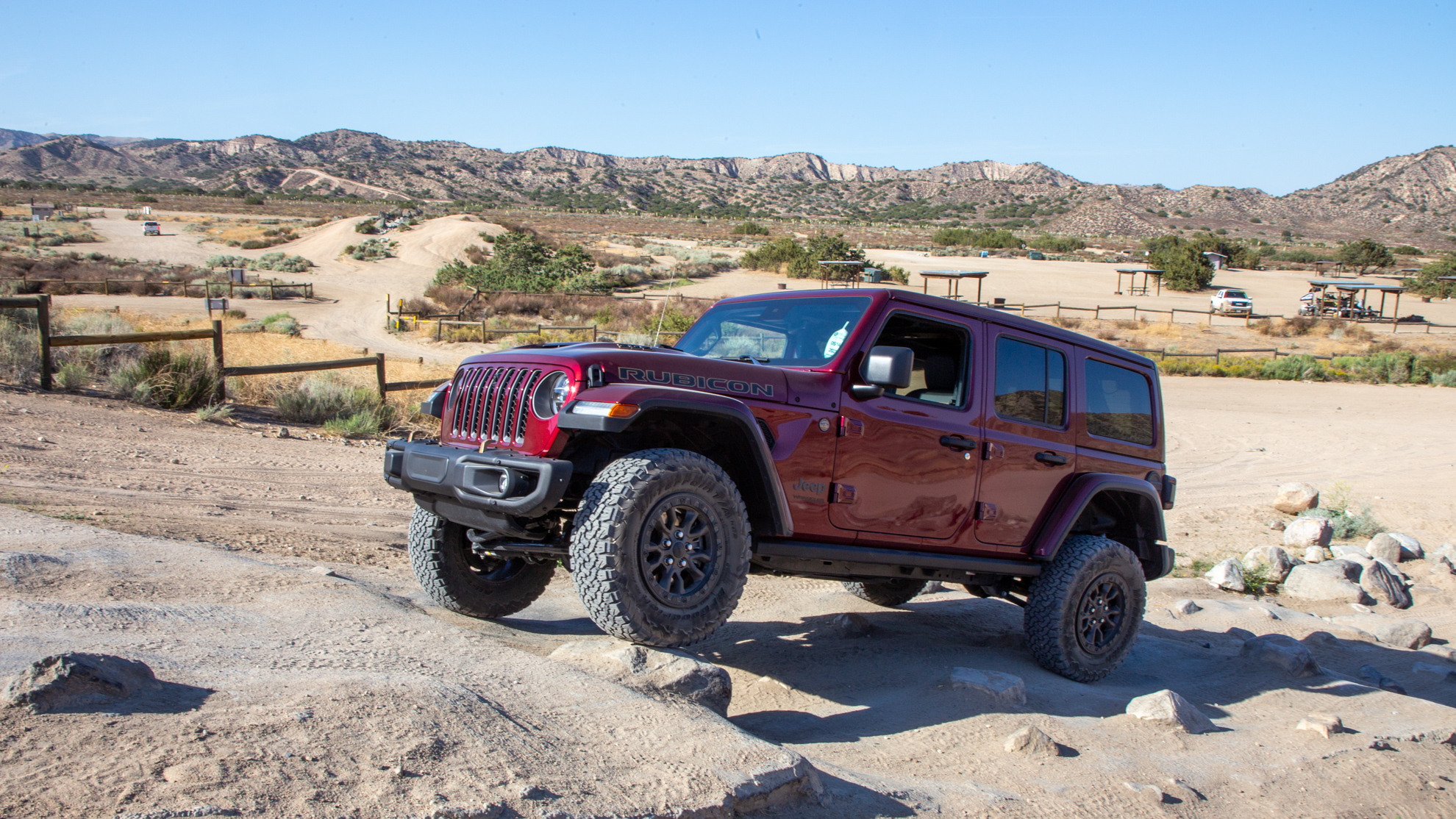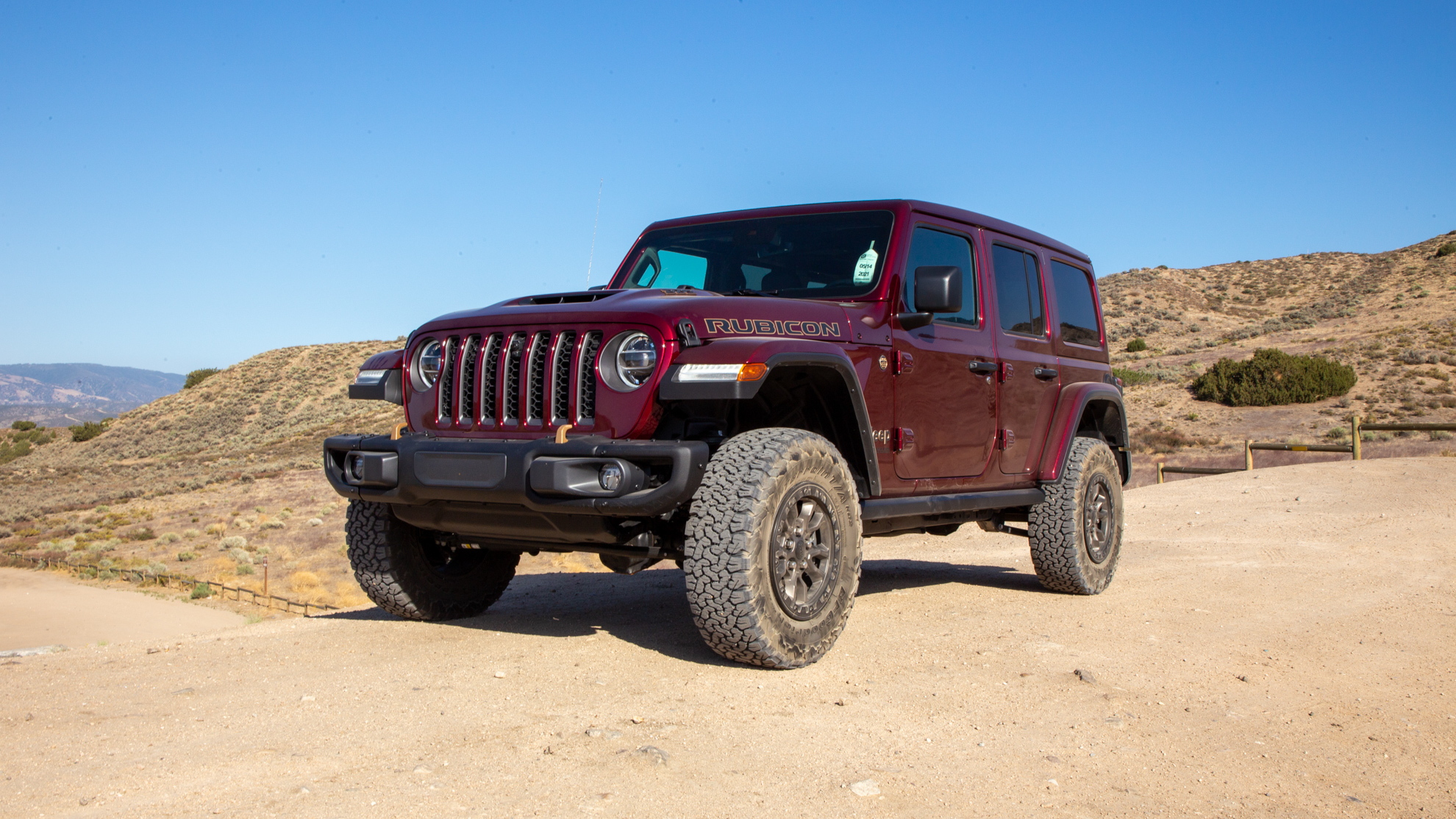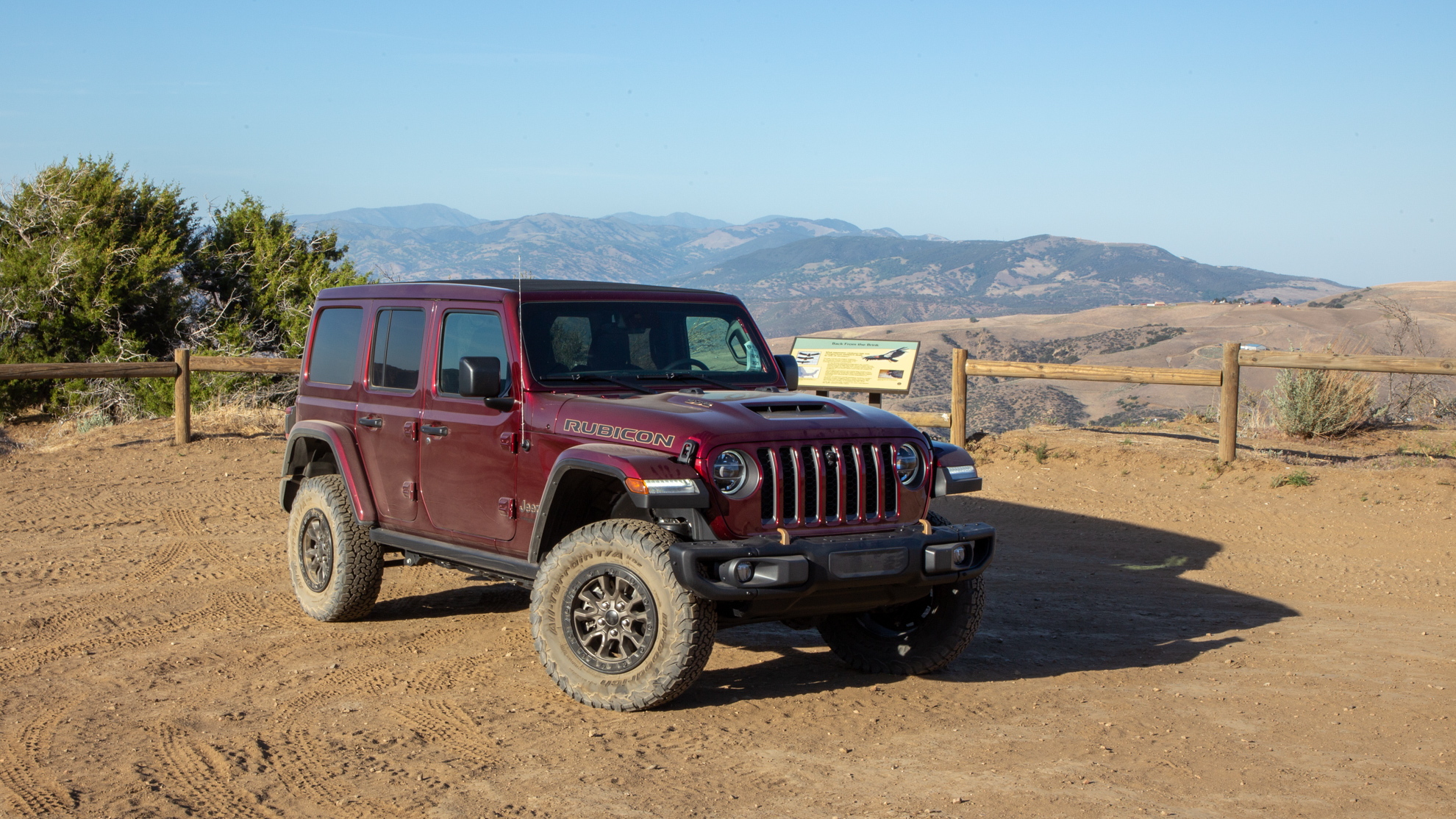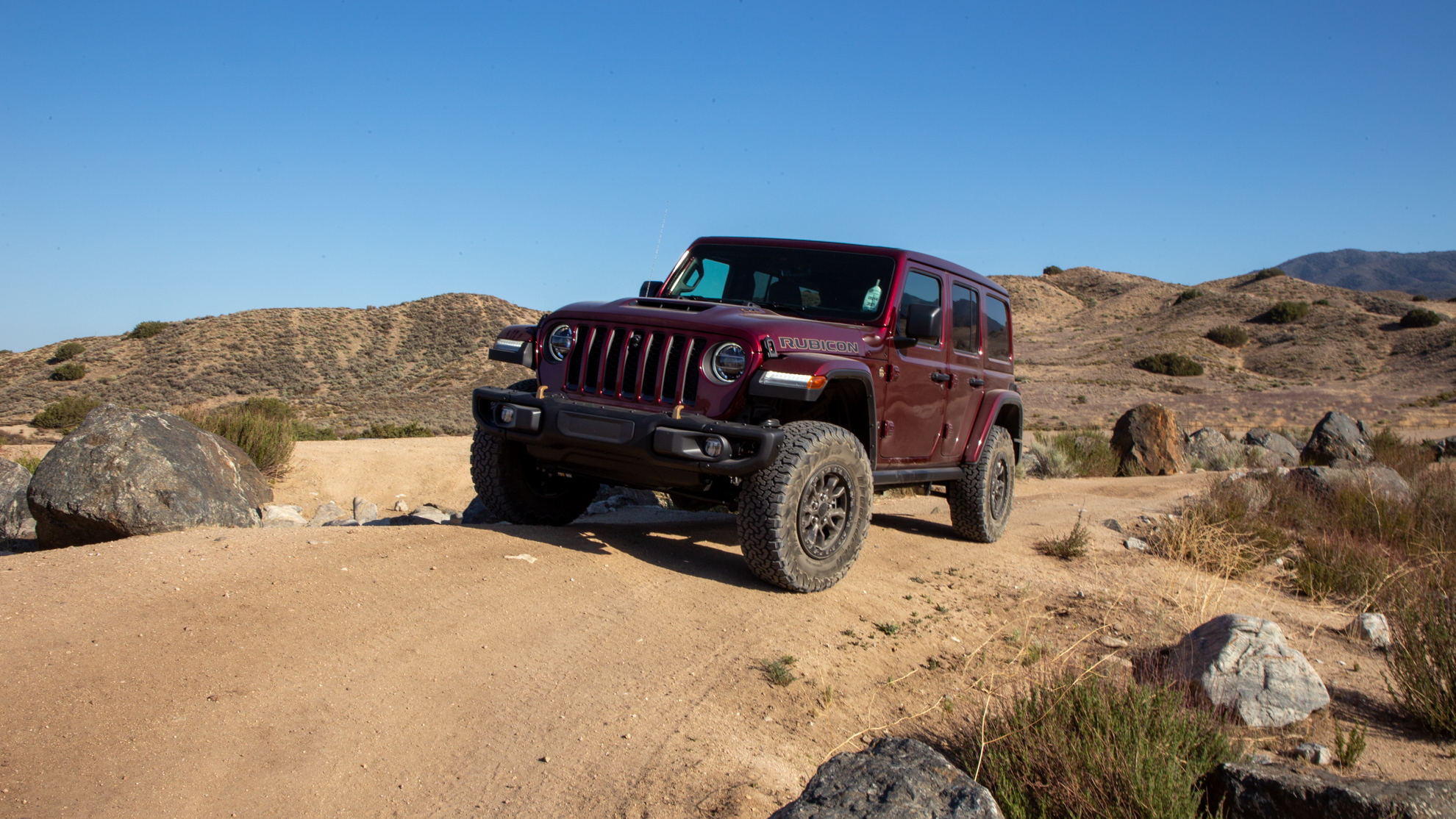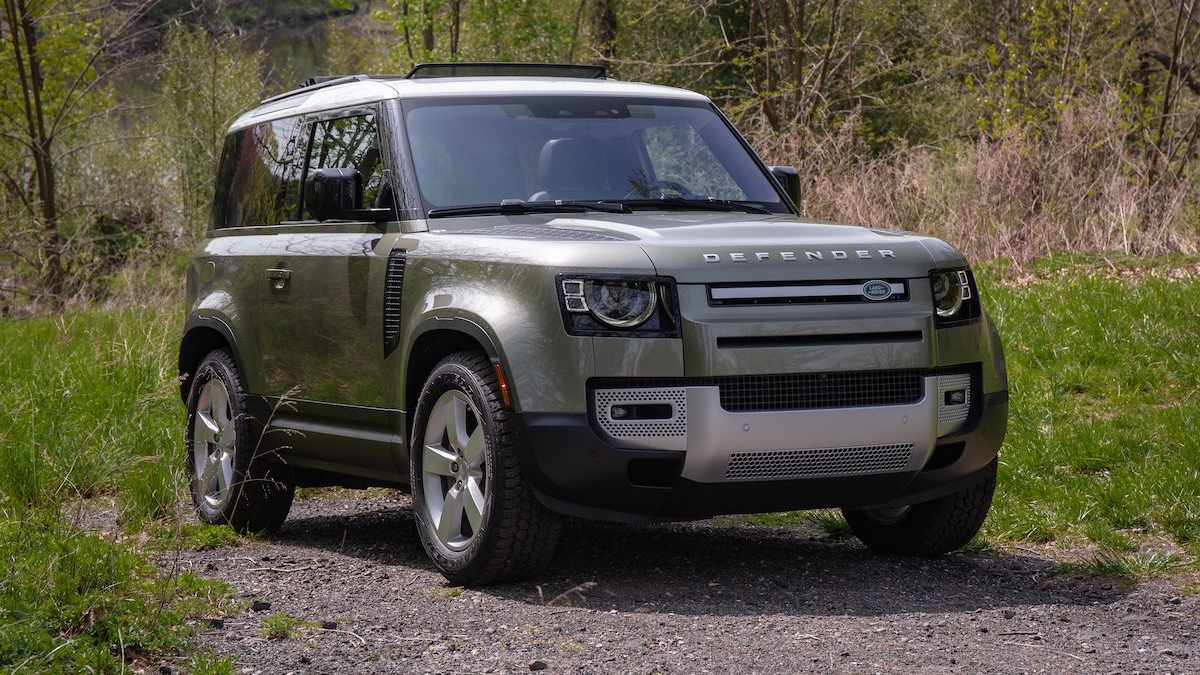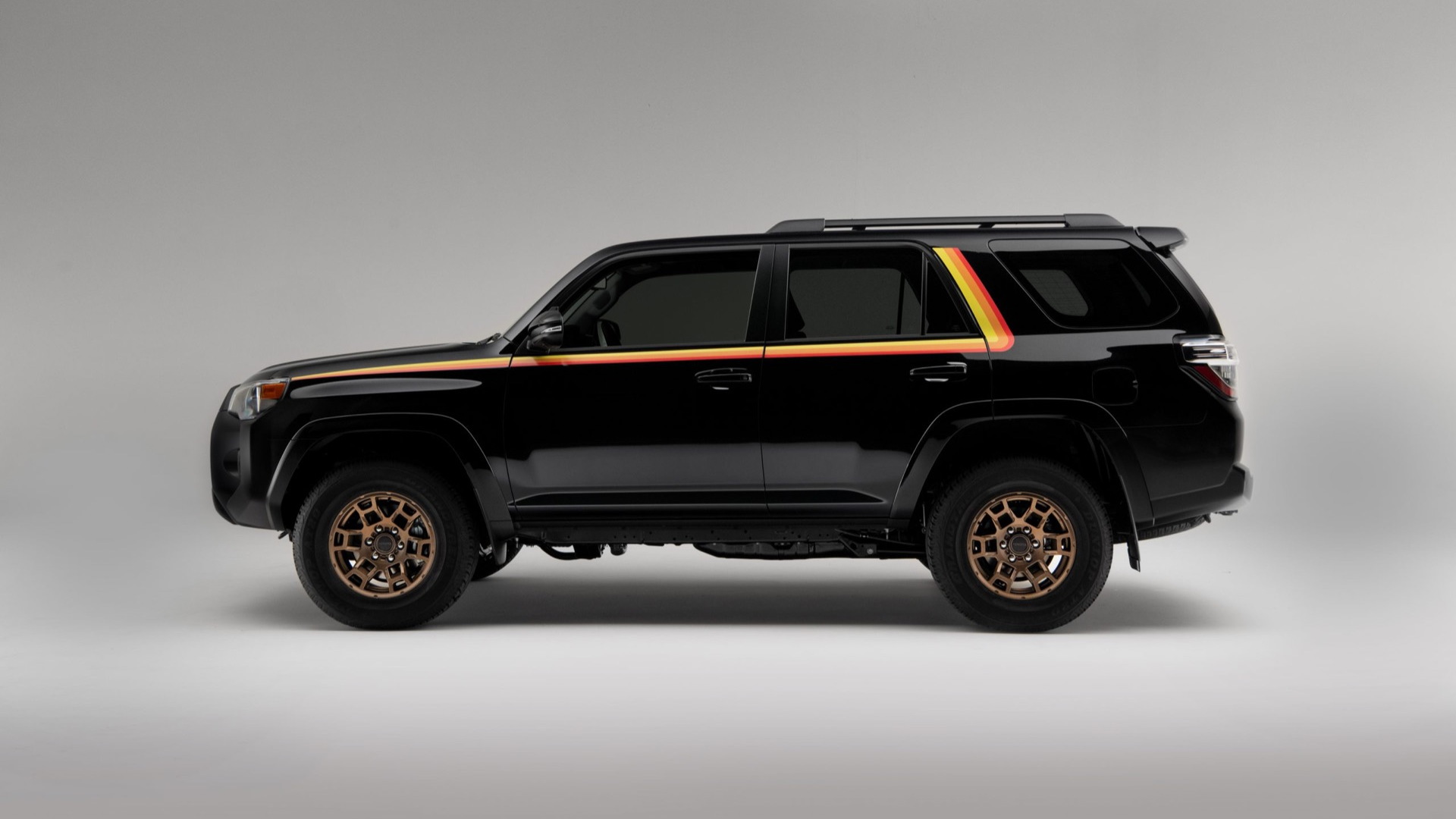Sometimes I have to pinch myself to remember that the 2021 Jeep Wrangler Rubicon 392 is a real thing and not the fever dream of an engineer obsessed with horsepower. Jeep, much like sister company Dodge, has seemed to revel in putting larger and more powerful engines into many of its vehicles, and the Wrangler is the latest to get the V-8 treatment.
Fellow editor Kirk Bell took the reins of the Rubicon 392 first, putting it through its paces on the street and waking his neighbors with the V-8’s hearty bellow. But no test of anything with “Rubicon” in the name would be complete without taking it off-road, so I took a 2021 Jeep Wrangler Rubicon 392 test vehicle out to the Hungry Valley OHV area north of Los Angeles to see how this increase in power manifests itself after the pavement ends.
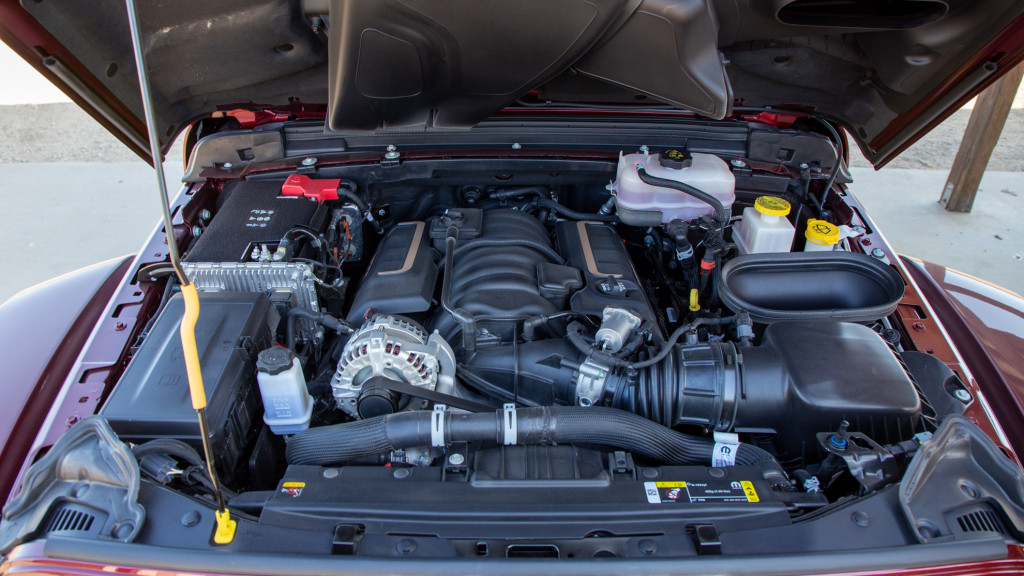
2021 Jeep Wrangler Rubicon 392
The showpiece of the Rubicon 392 is its 6.4-liter V-8 that pumps out a matching 470 hp and 470 lb-ft of torque. Power runs through an 8-speed automatic transmission to Jeep’s full-time Selec-Trac four-wheel drive system with a 2-speed transfer case. On the street, this is enough to power the Rubicon 392 from 0-60 mph in a quoted 4.5-seconds with a quarter-mile time of 13.0 seconds. Top speed is limited to 99 mph (because of the tires), though off-roading I wouldn’t come close to that speed.
The Wrangler’s other engines don’t offer nearly the same power output, save for the diesel who’s torque output (442 lb-ft) comes close to the V-8’s but it’s way down on horsepower. To date, the diesel has been my favorite of the Wrangler’s engines for off-roading (and it’s my favorite in the Gladiator as well). It offers a lot of dexterity and easy control over its torque, which gives the driver more confidence when going over obstacles, especially when rock crawling. But get it out into a higher speed scenario and the diesel can get bogged down. The Rubicon 392 provided a contrasting experience, because while it’s still good at going slow, it’s far more comfortable sprinting on sand and dirt.

2021 Jeep Wrangler Rubicon 392
The “OFF-ROAD+” button on the lower dash is essential for any kind of low-speed activity in the Rubicon 392, helping to modulate the throttle, transmission shift points, and traction control. Jeep says that the same button should be left on when running the Rubicon 392 over faster, looser surfaces as well like sand washes. The system appears smart enough to detect what kind of off-roading you’re doing because the throttle response later in the day while I was running through a dry riverbed at speed was up to par.
Without that button activated, climbing up any kind of loose surface becomes an exercise in frustration. Trying to ascend a loose dirt hill pocked with large holes and grooves required more dexterity than the standard setting allowed. The tires slipped too much, and I was unable to adequately control the power output to get the tires to hook up.
But Off-Road+ made things easy once more. It restricts the throttle and sets the traction control to limit wheel slip nearly entirely. In this setting, whether I was in 4Hi or 4Lo it became simple to walk the Wrangler up the hill.

2021 Jeep Wrangler Rubicon 392

2021 Jeep Wrangler Rubicon 392

2021 Jeep Wrangler Rubicon 392

2021 Jeep Wrangler Rubicon 392
I tackled the rock course next with Off-Road+ engaged (I didn’t dare to try with it off), and the Rubicon 392 crawled up the race just as easy as a regular Rubicon would. The lack of running boards on the side of the vehicle may make climbing in more of a chore, but they are one less thing to worry about if you’re moving over rocks and boulders. The Rubicon 392 once again reminded me of the regular Rubicon in this environment: very capable.
The Rubicon 392 actually has better approach (44.5 degrees) and departure (37 degrees) angles than the standard Rubicon, beating it by 0.6 and 0.5 degrees respectively. But it does sit about half an inch lower, and out on a trail or while crawling it felt more or less like a regular Rubicon. I didn’t feel as though the Rubicon 392 could get anywhere that a Rubicon couldn’t, and vice versa. And both are still equipped with the right tires, plenty of suspension flex, and lots of wheel travel.

2021 Jeep Wrangler Rubicon 392
Where the Rubicon 392 really shines is on any kind of loose surface over flat ground. The raw power paired with a suspension that’s ready to absorb gratuitous punishment make it an absolute riot in any kind of dirt or sand. I wouldn’t call the other Wrangler variants underpowered for most duties, but the V-6 can lose momentum in the loose stuff and doesn’t spin up enough power to really sling the Wrangler out of corners. The diesel, as mentioned previously, also isn’t quite at home in this environment. It lacks the immediacy you’d ideally want from the throttle, even with all that torque.
Not so in the Wrangler 392. Hit the gas and the tires slip for just a moment until those knobby 285/70R17 BFGoodrich All-Terrain T/A KO2 tires hook up and launch the Jeep forward with the same surprising acceleration you find on the street. Hungry Valley has a long dry riverbed that runs parallel to the park’s main road, and it’s an ideal place to let the Wrangler 392 off the leash. I parked the transmission in third gear once I got up to speed and the tires just kept churning and churning as I shot down the riverbed.
I barely had to steer into corners. It was more fun to gently nudge the nose in, hop on the gas early, let the Wrangler power around to the right angle, then apply a tiny bit of countersteer, add some more throttle, and end up exiting faster than I entered. The Rubicon 392 can run these looser environments in both normal and Off-Road+ modes, though the former provides a bit more aggression to spin the tires more freely.

2021 Jeep Wrangler Rubicon 392
The performance Fox shocks shine at speed, absorbing trail imperfections and helping to keep those churning wheels on the ground. Beefing up the front suspension to handle the engine’s extra weight with stiffer front frame rails, upper control arms, and cast-iron knuckles also help keep the front of the Rubicon 392 from diving under braking. That keeps the nose more upright and lets the vehicle get back to sand-flinging more easily.
With the V-8’s raucous exhaust note providing an appropriate soundtrack and the sand/dirt forming clouds in my wake, the dry river run was such a transcendent experience, that I turned around around and scampered back to where I came from. Then I did that three more (ok, five more) times.

2021 Jeep Wrangler Rubicon 392
Now for the bad news — all of this goodness doesn’t come for free. My Rubicon 392 test vehicle carried a sticker price of $78,545. Yes, the Rubicon 392 makes the Wrangler much more fun where it was previously weakest and it does so without giving back any capability, quite a feat. But seeing a Wrangler push nearly 80 grand makes my eyes water a touch.
Even so, I have the sneaking suspicion that Jeep won’t be hurting for buyers for this (as Kirk called it) “big boy toy.” The prodigious acceleration and roaring exhaust note are just enough to get you to forget the price in moments. Does the Wrangler Rubicon need a V-8? Of course not. But I’m glad the crazy engineers at Jeep wanted it and made it happen.
